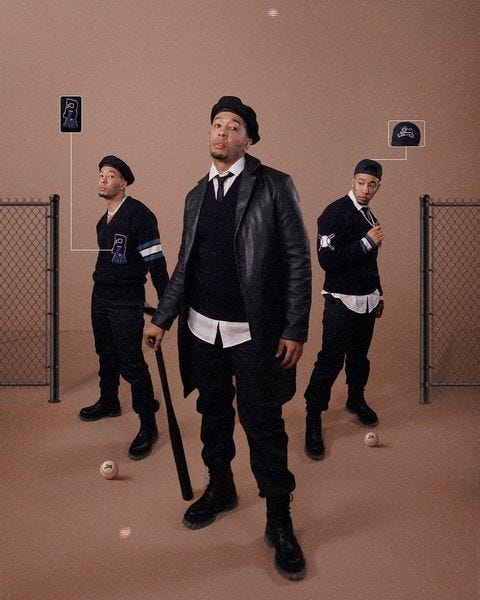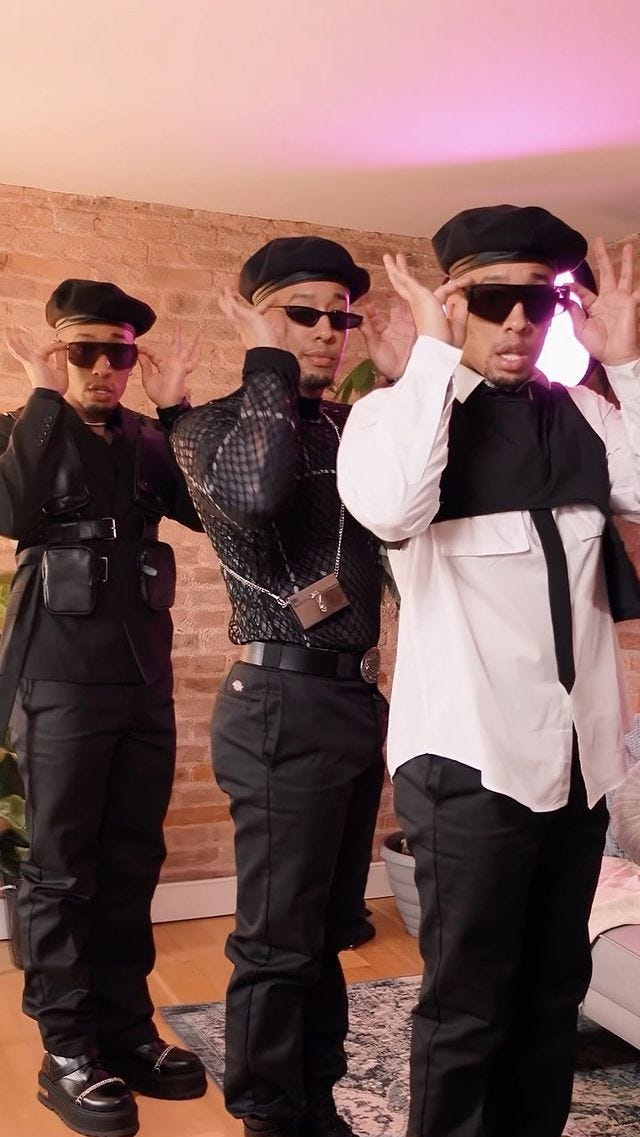Pele Newell: “As a mixed person, you’re getting it from both sides”
The creator on intersectional identities, acceptance and finding his place
Hi, welcome back to Mixed Messages! This week, I’m speaking to TikTok creator Pele Newell, who is of white and Black Caribbean heritage. Part of the LGBTQ+ community, Pele showed me just how entwined the multiple parts of your identity can be and how they often can’t be understood in isolation. Read his interview below.
How do you define your mix?
I’m white and Black Caribbean, which is almost the typical mixed-race. I identify as a Black man, which is interesting because you’re highly unlikely to come across someone who is mixed and would identify as white, even though we technically could.
Being from Birmingham, I’ve discovered that the Midlands used the (offensive) term ‘half-caste’ for a lot longer than other places. Being from Derby yourself, did you see that?
Yeah, when I was growing up people used it all the time, especially of my parents’ generation. I heard it less in my generation. I didn’t realise it was bad until midway through secondary school.
If someone says that now, I just explain that we don’t use that term anymore. I’m fine with someone making a mistake, it’s always good to educate people.
You feel quite settled in your identity – has that always been the case?
I think it all depends on your upbringing, and for me I was brought up in a mixed environment. It was difficult for me personally because they’re Christian and I’m part of the LGBT community. In the Black community, you’ll find people who are completely for it or completely against it, so it can be really tough for a lot of Black queer kids.
I’ve only figured myself out over the past few years, and because I never really had any Black friends it was hard to feel accepted. When in a room full of people, I didn’t know who to gravitate towards – maybe the white people because they were my friends, but they wouldn’t necessarily gravitate towards me because I was obviously different to them. Then I didn’t feel completely comfortable gravitating towards Black people, because I hadn’t had that experience. I was in the middle.
There’s always been that question of who to identify more with, and I don’t think it needs to be that important. While there weren’t many Black people in my area growing up, I now have so many Black friends.
How did you connect to that culture?
Starting to dance at Nottingham University opened me up to the culture – it was a great environment to see people like me thriving. Nottingham is where I really felt like myself as a person.
Back then I wasn’t subconsciously looking, but now I do actively seek Black or mixed creatives. I identify with them more strongly.
How does your mixedness influence your work?
When I started, I thought about other queer Black boys growing up in a community where it’s hard to be yourself, and there’s not a lot to look up to. I strive to tell other people like me, or younger than me, that it’s going to be ok. I talk about it being fine to have insecurities, because there’s a big stigma as a man about having to be masculine. I want to say that it’s fine to be who you want to be. It’s taken time to be true to myself.
How do you want the conversation about mixed identity to change?
I feel like as a mixed person, you’re almost getting it from both sides. On one side, you’ve got people that just don’t want to accept you – racists, basically. Then you’ve got people that are supposed to be on your side, but their argument is that we have it easier because of colourism. We 100% do, but the argument can sometimes feel like an attack, when we should be working together and helping each other. Mixed people definitely need to help darker-skinned people.
What’s the best thing about being mixed?
You’ve got different cultures as part of you, and that can make you a unique and amazing person. You can also accept more, your eyes are opened. The holidays are great as well!
Can you sum up your mixed experience in one word?
Journey. It has been a journey from the start to being comfortable in my own skin.
Next week, I’ll be talking to TikTok creator Solana. Subscribe to get Mixed Messages in your inbox on Monday.
Enjoy Mixed Messages? Support me on Ko-Fi so I can continue to grow this newsletter! Your donations, which can start from £3, help me pay for the transcription software needed to keep this newsletter weekly.
Mixed Messages is a weekly exploration of the mixed-race experience, from me, Isabella Silvers. My mom is Punjabi (by way of East Africa) and my dad is white British, but finding my place between these two cultures hasn’t always been easy. That’s why I started Mixed Messages, where each week I’ll speak to a prominent mixed voice to delve into what it really feels like to be mixed.








Amazing to find this series. So many things strike a chord. Couple of things Pelle said really stood out for me - "you’re highly unlikely to come across someone who is mixed and would identify as white, even though we technically could" - thing is, technically, but we know we don't fit. White is white and not beige (or whatever my skin is described as).
And then, the both sides thing hurts, because while we benefit from different degrees from colourism, we end up with nowhere to belong.